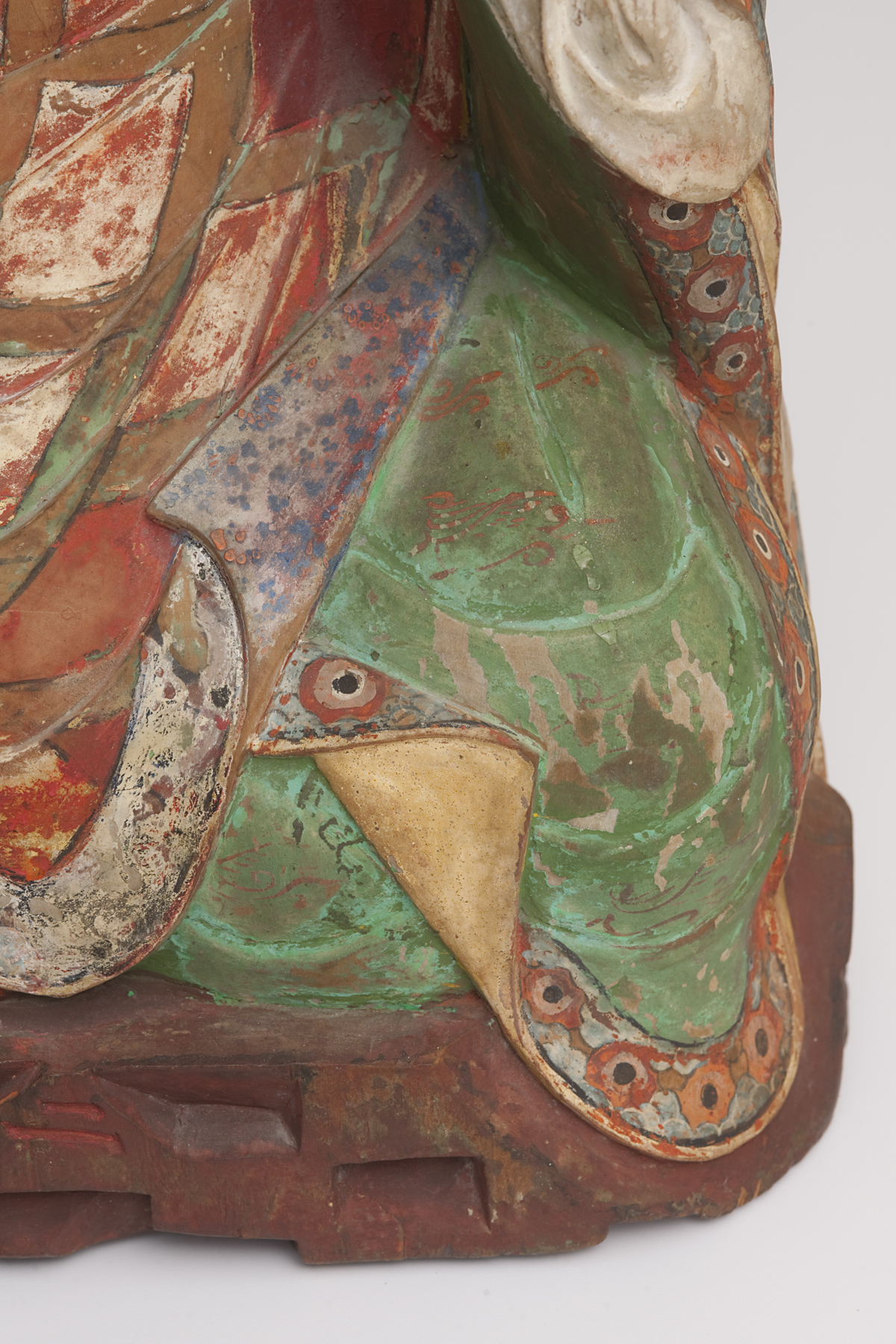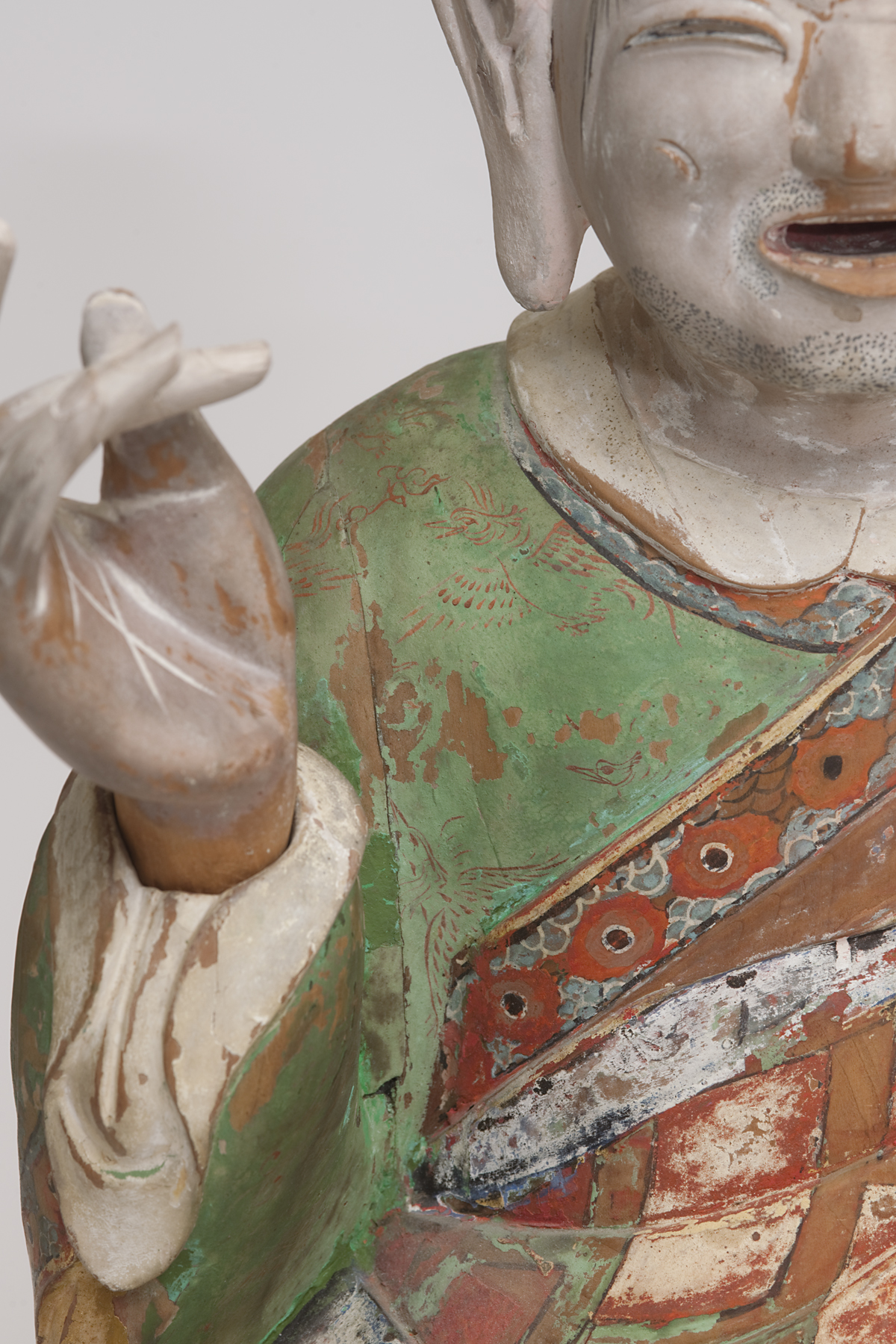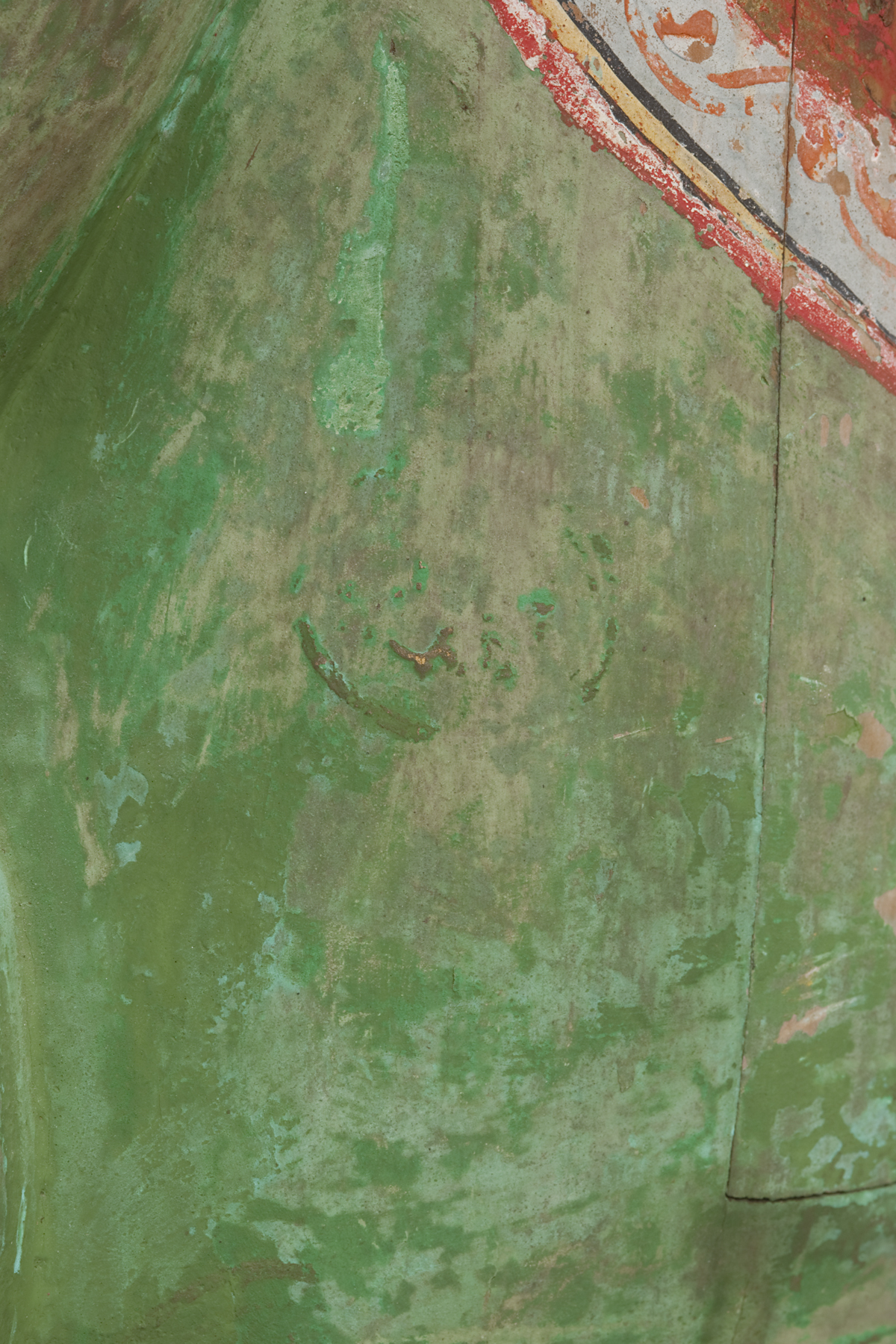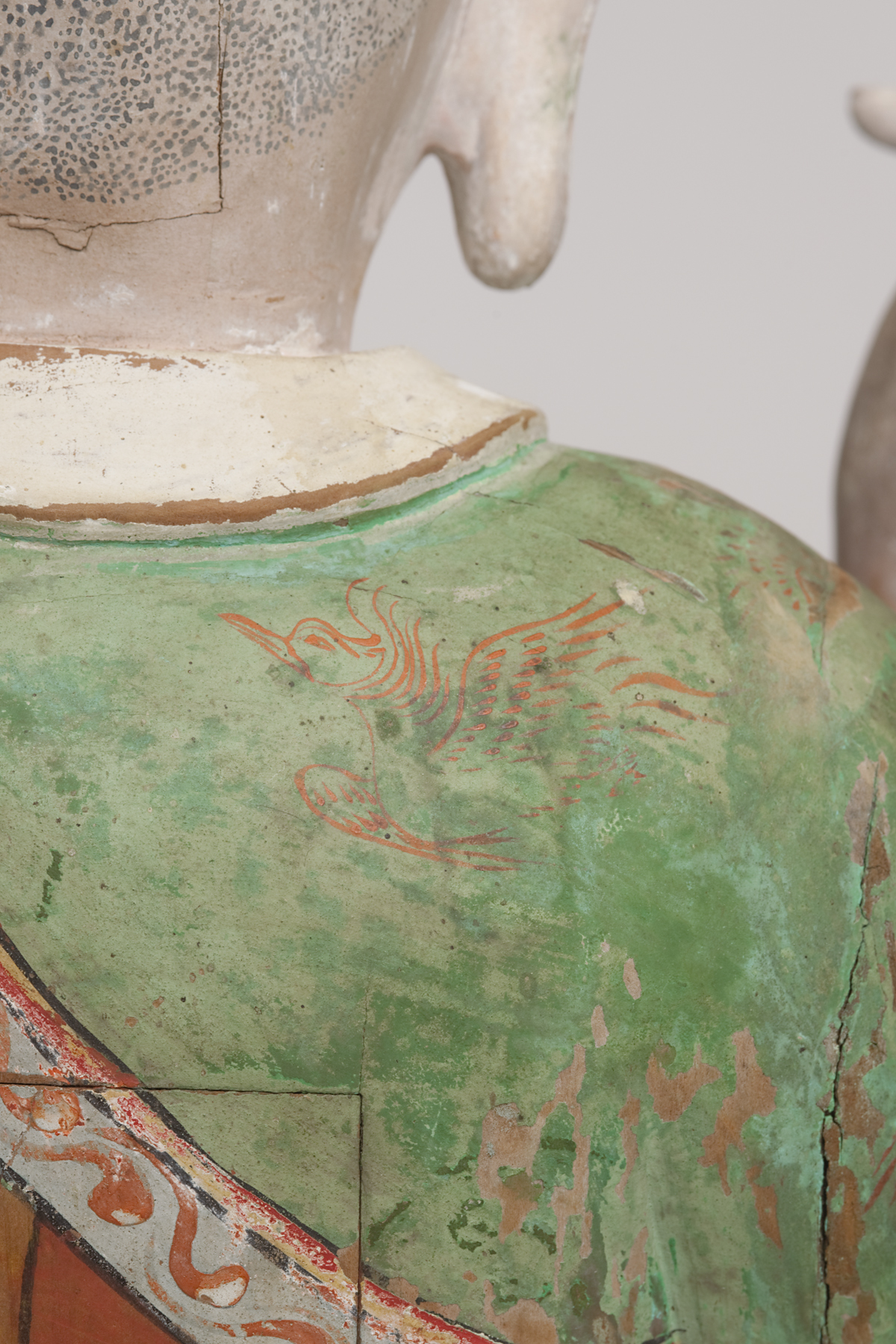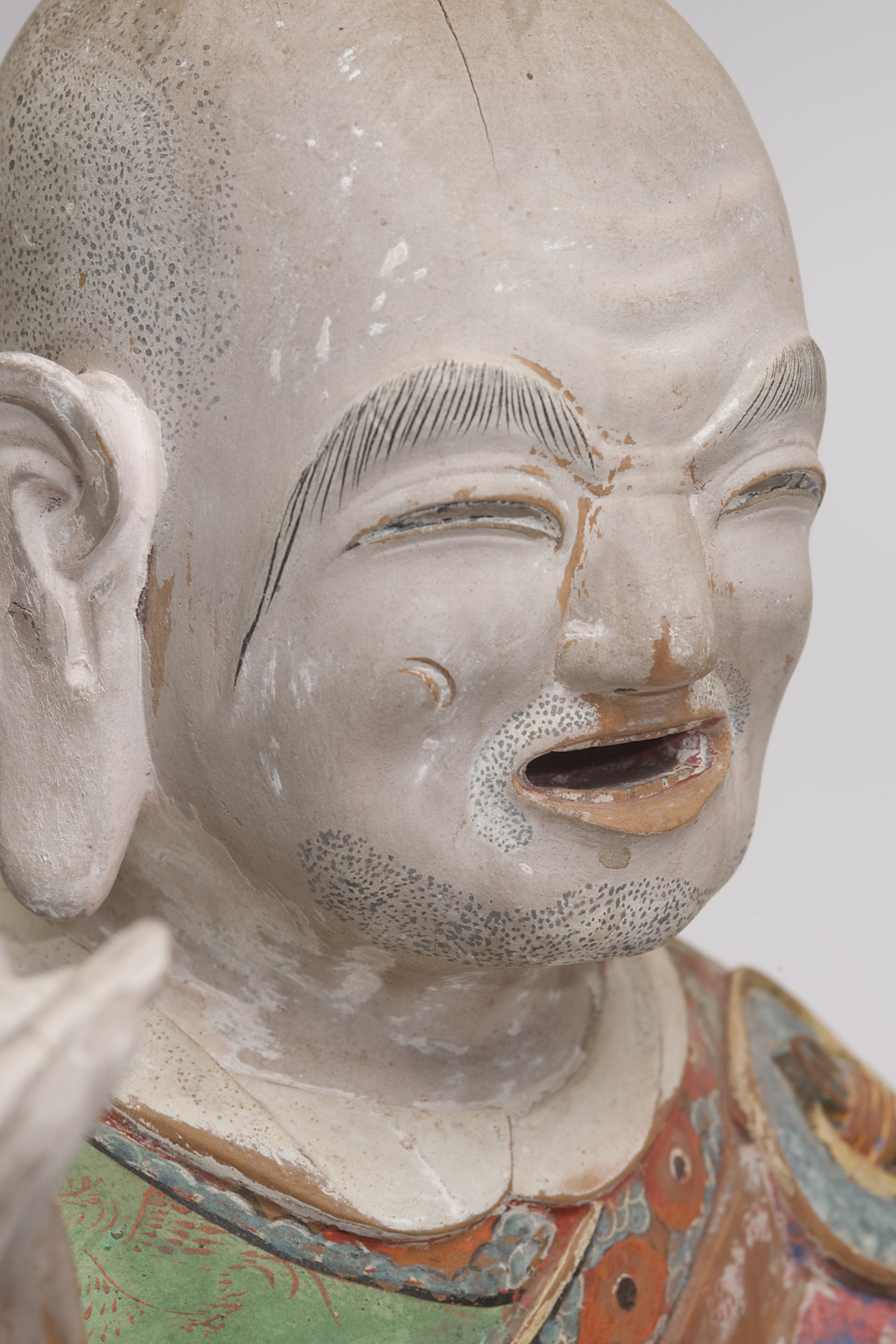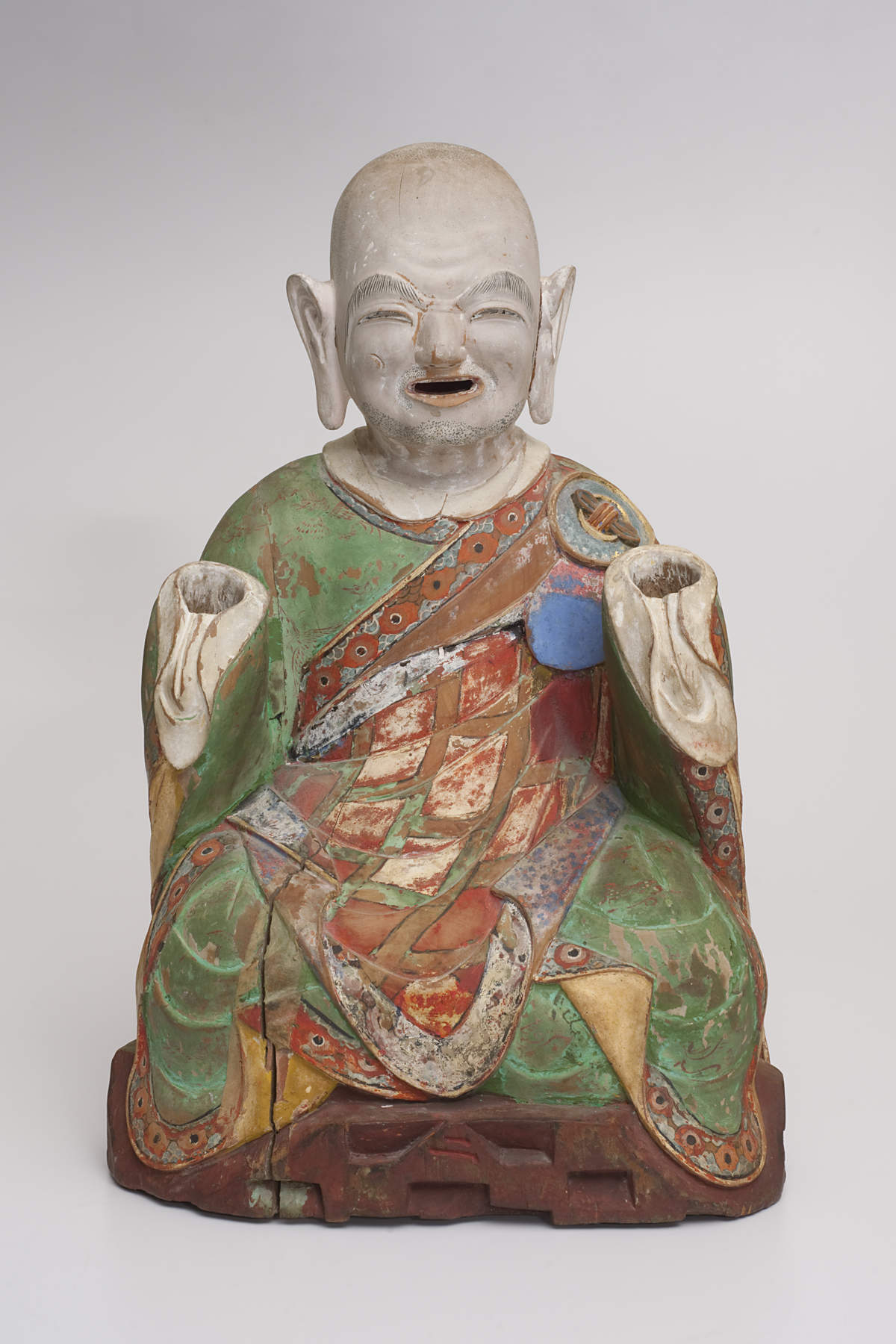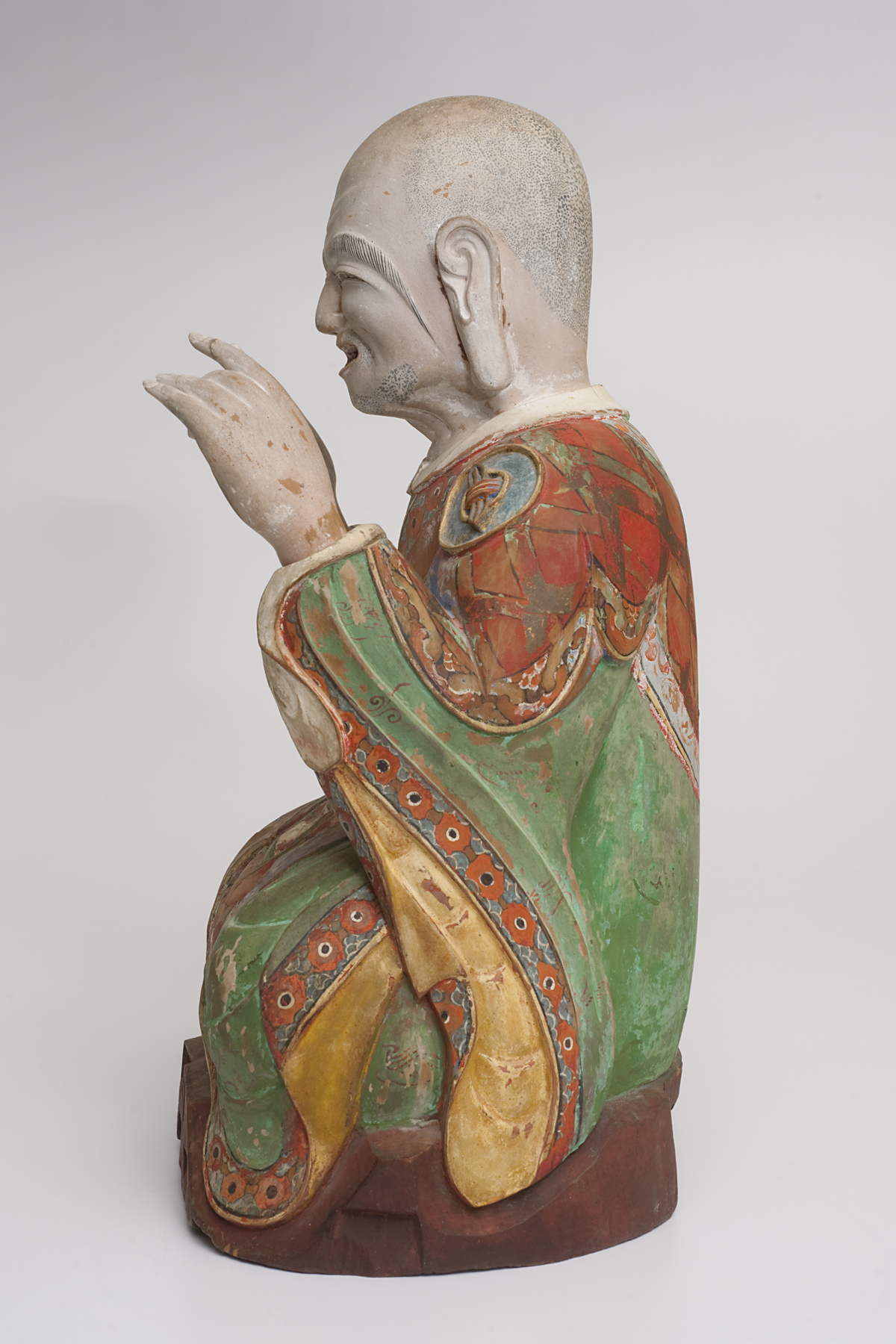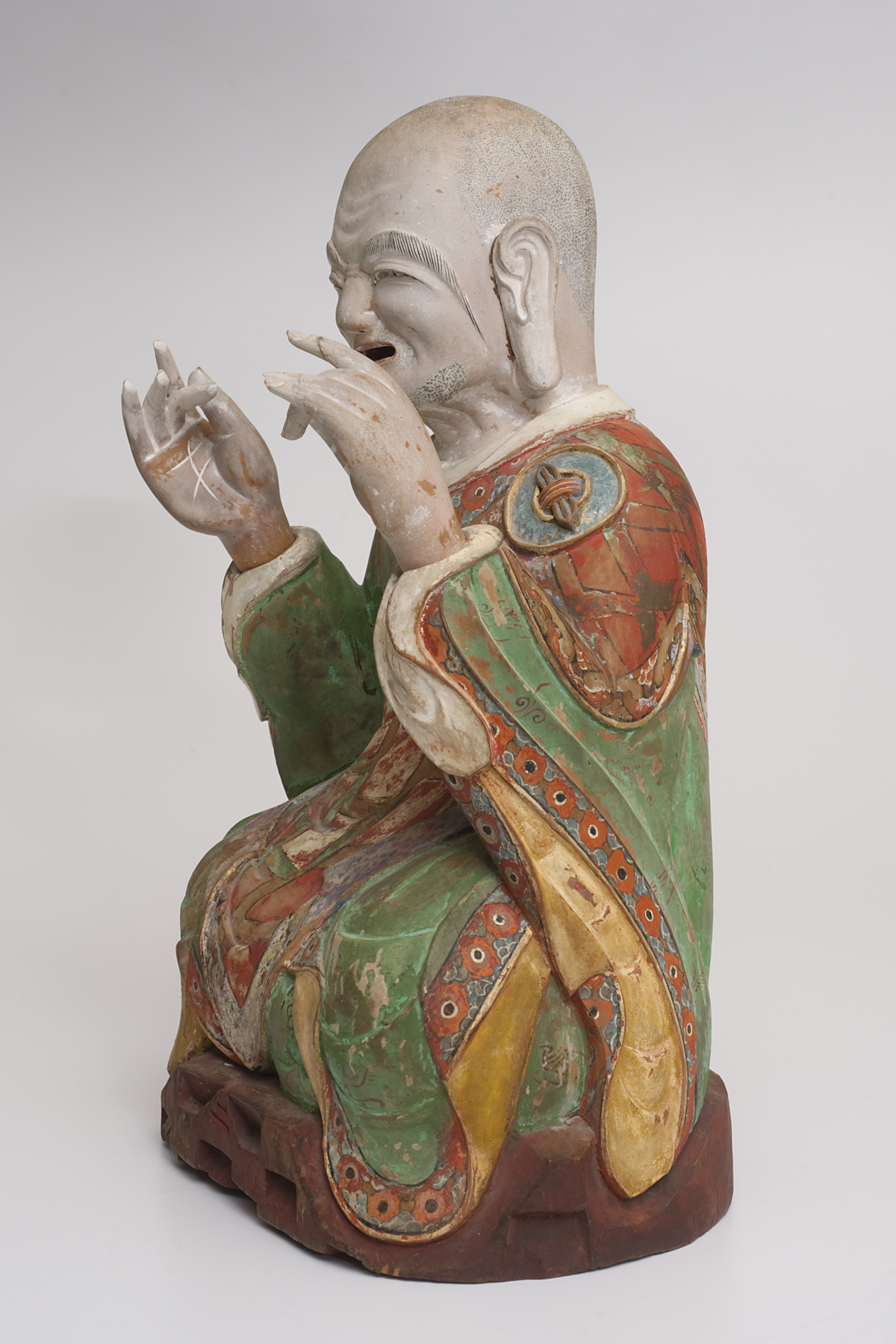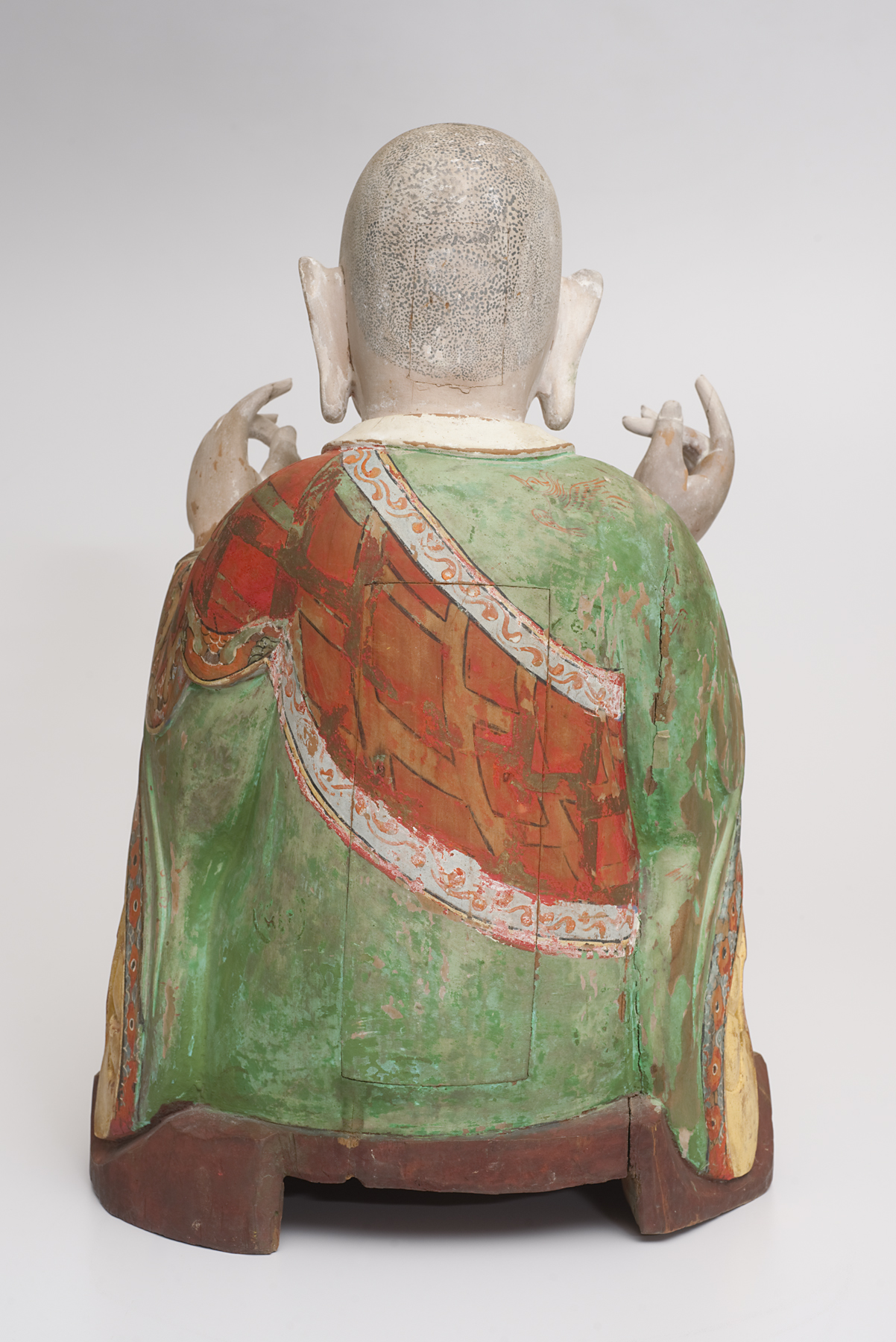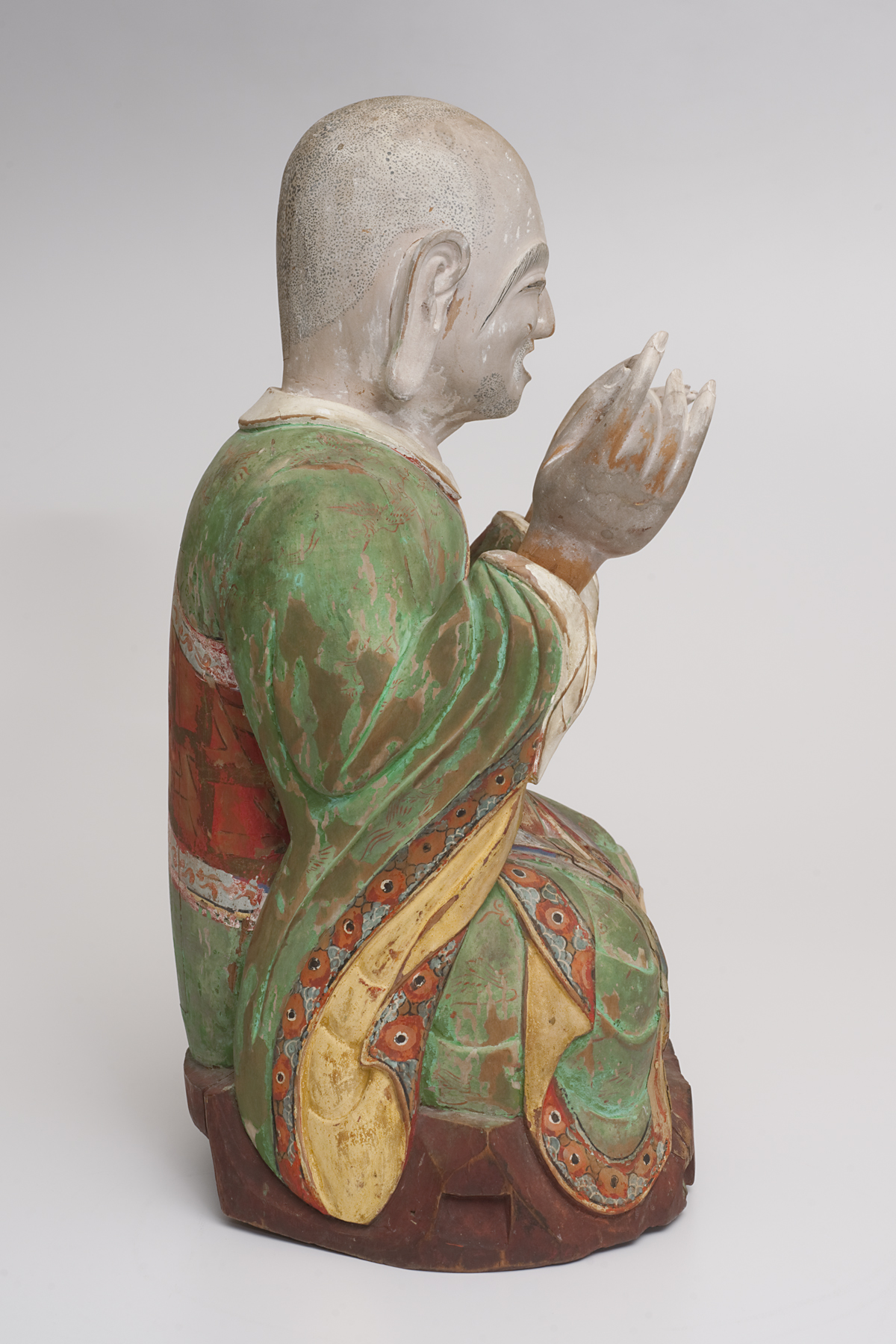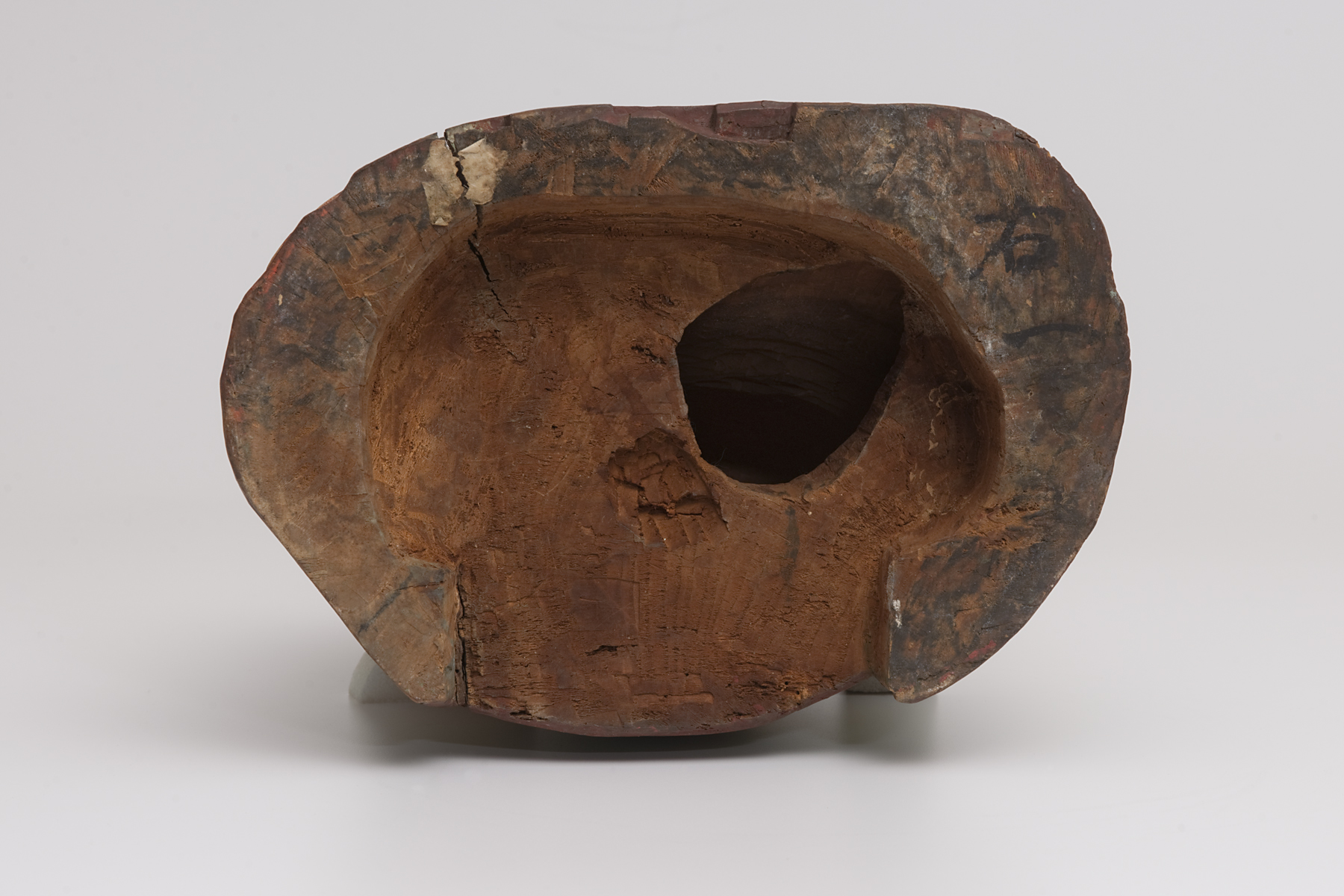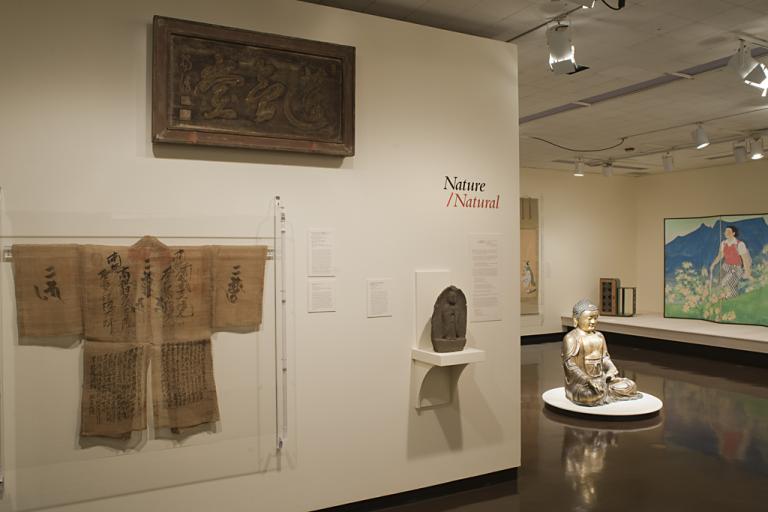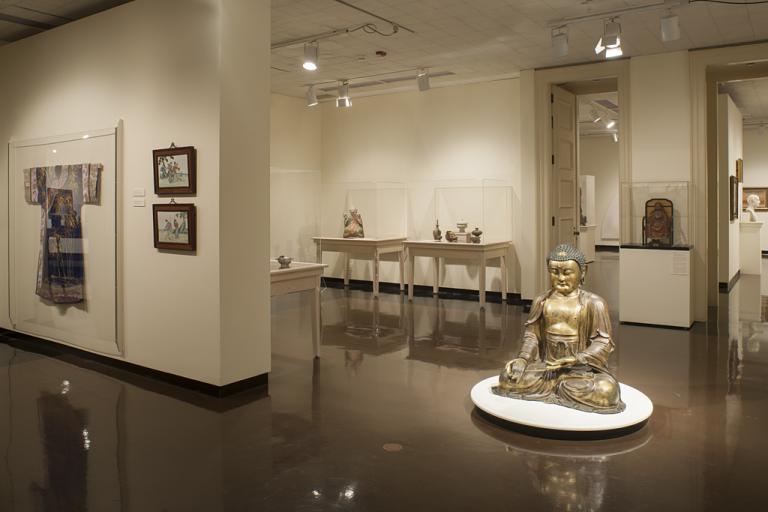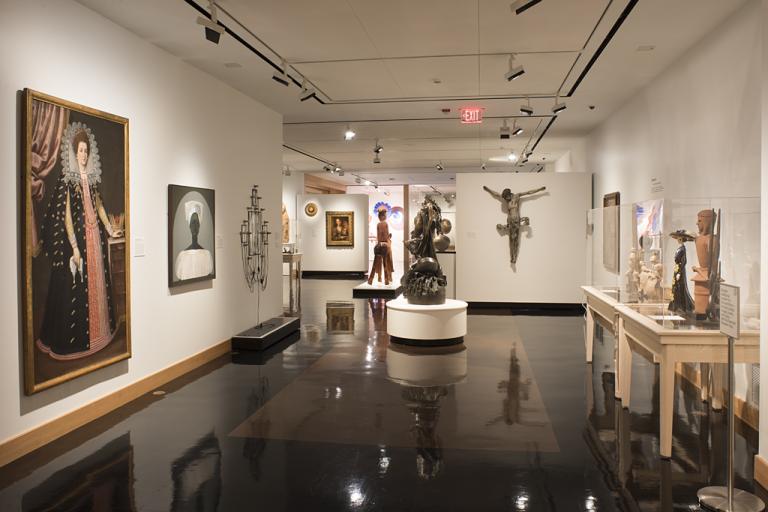迦諾迦伐蹉 Seated Nahan Ganakgabeolcha (Sanskrit: Kanakavatsa), unknown maker from Korea
Artwork Overview
迦諾迦伐蹉 Seated Nahan Ganakgabeolcha (Sanskrit: Kanakavatsa)
, late 1600s–early 1700s, Joseon dynasty (1392–1910)
Where object was made: Korea
Material/technique: wood; polychromy
Dimensions:
Object Height/Width/Depth (Height x Width x Depth): 52.07 x 32.7 x 24.13 cm
Object Height/Width/Depth (Height x Width x Depth): 20 1/2 x 12 7/8 x 9 1/2 in
Object Length (Length): left hand 17.78 cm
Object Length (Length): 7 in
Object Length (Length): right hand 17.14 cm
Object Length (Length): 6 3/4 in
Object Height/Width/Depth (Height x Width x Depth): 52.07 x 32.7 x 24.13 cm
Object Height/Width/Depth (Height x Width x Depth): 20 1/2 x 12 7/8 x 9 1/2 in
Object Length (Length): left hand 17.78 cm
Object Length (Length): 7 in
Object Length (Length): right hand 17.14 cm
Object Length (Length): 6 3/4 in
Credit line: Museum purchase: Helen Foresman Spencer Art Acquisition Fund
Accession number: 2012.0092
On display: Loo Gallery
If you wish to reproduce this image, please submit an image request

